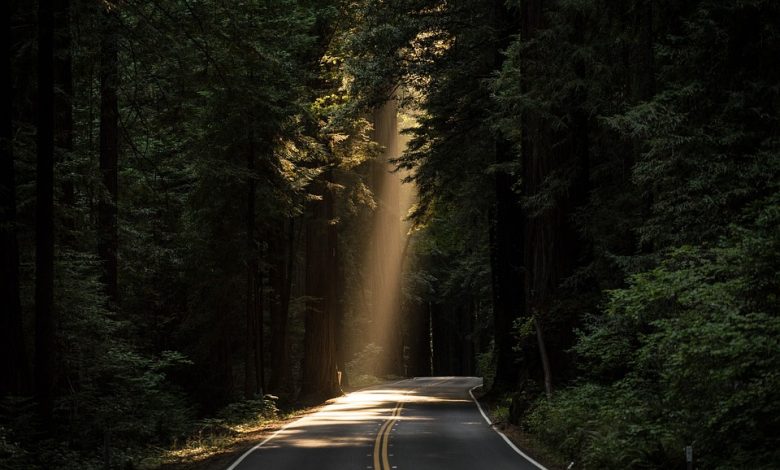Connexion: Roll out a way-to-go bus and riverboat system now


By Joachim Ng
Someone has turned up the heat in Malaysia, and guess who did it. Temperatures have soared into the 35C-37C level and the 38C mark has even been hit. A woman actually tried frying an egg under the sun. But an important news break three years ago that you might have missed was this: nitrogen dioxide in the air showed a sharp increase of up to 157% in Ipoh and other big urban areas, compared to the levels registered during the Covid-19 lockdown period three months earlier.
Nitrogen dioxide (NO2) is a gas produced mainly fromm motor vehicles. The spike in levels showed that motorists were out on the roads again since three years ago. However, while nitrogen dioxide has the ability to trap heat in the Earth’s atmosphere it is not as potent a greenhouse gas as carbon dioxide (CO2), which is another byproduct of burning petrol.
As the number of vehicles in Malaysia that are listed as active has jumped to around 23 million last year from 21.7 million in 2021, it means that CO2 and NO2 levels have increased 6% between 2021 and 2022.
CO2 is the primary driver of climate change, and the statistics tell a depressing story. Before the dawn of civilisation, primitive Stone Age people lived for half a million years with atmospheric carbon dioxide (CO2) levels mostly below 250 parts per million (ppm).
The advent of civilisation 7,000 years ago brought the CO2 level to 280 ppm, and it held steady at that level until the start of the Industrial Revolution around 1750. CO2 levels have since been spiking, reaching 290 ppm in 1850, 315 ppm in 1958, 320 ppm in 1965, 335 ppm in 1979, 400 ppm in 2013, 413.2 ppm in 2020, and 414.72 ppm in 2021. Last year it hit 417.2 ppm, and this year’s forecast is 419.2 ppm. This is a spike of 168% from the days of Fred Flintstone.
Greenhouse gas emissions are responsible for the past eight years being the hottest on record. As they endanger our survival, the UN Intergovernmental Panel on Climate Change recommends in its March 2023 report that these emissions be cut by half by 2030 (from 2019 levels).
Malaysia has set a goal to achieve carbon neutrality by 2050. This requires making a full transition to non-fossil fuel vehicles by that year; in other words, only electric vehicles (EVs) can be allowed on the road by 2050. But unless you earn Merc-class income, an EV is not within your means. This isn’t China where you can buy an EV for just RM50,000. In Malaysia, the EV price has made it a glamour toy for the crazy rich. Hence, less than 0.05% of cars on our roads are EVs.
Until you get an EV, you must clutch the wheel of your petrol-driven car tightly. It is a good companion and can take you anywhere across the land. Nevertheless, the good news is that you can hold on to your tank and yet cut your CO2 emission by half. How?
The trick is to drive only half the week. In Australia, 80% of households own a car, but many do not use their vehicles daily. With efficient public transportation systems, green-conscious Aussies do not drive into the city centres during peak hours but ride on trains, buses, and riverboats.
Ipoh must set a target that from 1 June 2025, the city will have developed such an effective public transportation system anchored on the use of buses that car owners should feel the need to use their vehicles only on three other days besides Sundays. If everyone works towards this goal, petrol consumption will drop by half with the reduction of traffic jams. This is likely to prevent further air temperature rise.
Ipoh must jumpstart public transportation so that Kinta Valley will not degrade into another Klang Valley where office workers spend two hours in morning traffic jams and another two hours going home. It is not only every jalan in KL/PJ that is jammed during peak hours, but just about every lorong. And the peak hours stretch more than half a day.
Despite being served by 11 fully operating rail lines, only 20% of commuters in Klang Valley are using public transport. The failure is in the absence of first-mile and last-mile connectivity. If it takes you 40 minutes to get from the door of your house to the subway or LRT station, and another 40 minutes from the disembarkation point to your office, you may as well drive.
Kinta Valley must excel where Klang Valley as well as Penang and Johor Bahru have failed in managing road traffic, and it will succeed if the State Government and Ipoh city council plan way ahead of time before overhead or subway transit becomes necessary.
The bus is our saviour, and riverboats should also be introduced. There is no necessity for every bus to have a load capacity of 50 or more passengers. Buying only big buses is wasteful. Some routes just need midibuses, minibuses, mircrobuses, or minicoaches with 8 to 30 seats. The essential feature of all these buses is that they must be electric vehicles to be in line with sustainability goals. Small electric buses are quite affordably made, and transport historians may be aware that cheap electric vans were already plying London roads in the late 1970s.
There are five initial steps in planning a way-to-go transport system that will in later years incorporate light and mass rail transit:
First, install a bus stop that is not more than 200 metres from any house. Make sure there are trees for shady walking, and where feasible build a covered walkway as strong encouragement.
Second, conduct a household survey to establish the places where residents on every 200m stretch frequently go and the usual times.
Third, map out all the routes and the frequency of bus runs needed. Based on the expected passenger load, decide what size of bus is required for a particular route. Bus transfer stops should also be established in strategic locations so that residents can jump buses to carry on their journey.
Fourth, design an app to provide real-time info on schedules and arrivals/departures. Post the schedule on the bus stop for the information of tourists.
Fifth, make up your mind to run buses as a community service and not for profit. Take a holistic view: the money that Ipoh spends on buses will be offset by the money saved through reduction of petrol consumption and traffic jams.
Why must we reduce the frequency of car trips? It is because Malaysia is the 25th highest emitter of carbon dioxide among all nations. The transportation sector accounts for 28.8% of total CO2 emissions, above the global average of 24.5%. Of this amount, 85-90% comes from road transport. The biggest oil consumers are motorists who use their cars daily, burning petrol as their engines keep running in gridlocked and mind-numbing traffic jams. It is estimated that productivity losses through time wastage and mental fatigue run into billions of ringgit every year.
How do we convince motorists to use their cars only half the week? Use a carrot-and-stick approach. First the carrot: tell the brutal truth that heatwaves kill. Two months ago, Malaysia recorded the first heatwave death in its history — an 11-year-old boy whose blood had dried up. Up till two weeks ago, the Ministry of Health had recorded 14 cases of heatstroke. In Los Angeles County in the United States, about 150 people died every day during the hottest months last year when temperatures went beyond 38C and reached a high of 40C. Surely you don’t want your ageing dad or young child to suddenly die.
Another carrot to dangle is to sell an all-rider pass that allows travel by any bus, overhead or subway train, escooter, and riverboat that we shall come to later. Germany has made a headstart with a travel pass valid for use in any city.
The stick approach is to review the petrol subsidy, introduced because of the lack of public transportation. Subsidise public transport development and operations, while reducing petrol subsidies to reduce the frequency of car and motorcycle usage. Being nice in the wrong way is like feeding diabetic children with sugary meals every day.
Let’s now introduce the possibility of riverboats. This is a long-abandoned mode of transport that ought to be revived. Ipoh started its life on the banks of the Kinta River that has been a source of water, a form of transport, and a fishing ground. In the 19th century, Kinta River was the only means of communication between Ipoh and the rest of the country. Food and supplies for tin miners would be loaded at Teluk Intan on the Perak River, and the boat would then turn into Kinta River for the journey to Ipoh.
Australian cities cherish their rivers and the catamarans are popular with residents going to work, shopping, or the university. Water taxis are already plying Sungai Melaka as an alternative mode of transport to escape traffic jams.
Why can’t we put Kinta River to similar use? All that is needed are flat-bottomed motorboats with lifejackets and passenger capacity of six or more. The route can be from Bercham in the north to Menglembu in the south, with stops at Simee, Ipoh Garden, Kinta Riverfront, heritage and banking district where Concubine Lane is situated, Kampung Paloh near Anglo Chinese School, Falim, and Kuala Pari.
If workers, shoppers, and students living near the river make it a point to commute by river half the week, traffic flow in Old Town will get much smoother. The purpose, we must bear in mind, is to reduce CO2 emissions as that will bring down air temperature.
The riverboat ride, with a grand stop at Kampung Paloh, will also draw tourists. This Malay village that grew in the 1700s had served as a boat base in the 1800s. Paloh could be developed into a heritage landmark showcasing Malay and Chinese trading activities, as well as Orang Asli handicraft. To make river commuting attractive, there must of course be connectivity. Shuttle buses must run from shopping malls and hotels to the river stops.
At each river stop, personal mobility vehicles should be provided as the destination could be near and yet too far to walk. While 2-wheeled escooters have become a common sight in towns, older commuters would prefer 3-wheeled escooters for steadiness amd personal EVs if there are bags to lug around. Kinta River must of course be dredged of its smelly discharge from industrial, sewage, residential, wet markets, poultry farms, land development, and other sources of degradation before the riverboats can attract passengers.
You may wonder what’s the point of building up public transportation if there will only be EVs from 2050? EVs don’t give you a complete drive into clean air, because they use air-polluting tyres just like the petrol-driven vehicles. For every km of driving a tyre releases between 36 and 73 milligrams of particulate matter, contributing to air pollution. You don’t notice it because the particles are just 0.023 micrometres in size. As the everyday wear and tear of running tyres poses a threat to environmental and public health, you must flash your EV car only half the week.
There you go: a roadmap to climate-friendlier transportation.
=============================
Disclaimer: The views and opinions expressed in this article are those of the author and do not necessarily reflect the official policy or position of Ipoh Echo


